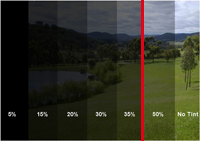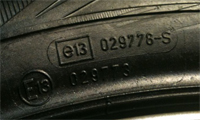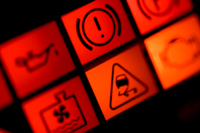With some interesting changes coming into effect on the first of April, I thought it would be useful to review the new categories coming into the NCT.
Are they reasonable changes that will help the ultimate goal of road safety or merely another way to generate revenue from the already heavily taxed motorist?
When the changes were first announced Minister Noel Dempsey said, “The new test items will improve the safety of vehicles on our roads, both for the vehicle owners and for other road users. This is another incremental step in our road safety agenda, to make our roads safer and to save lives and prevent injuries.”
But with close on half of all vehicles being tested returning a 'Fail Refusal' are we prepared for the new categories?

Changes with effect from April 2010:
Clarity of windscreen and front side windows
Excessively tinted windscreens or front side windows present a significant safety hazard for drivers and their occupants. The glass in the windscreen and front side windows will be required to have a light transmission level of not less than 65% in order to pass the test.
Rear fog lamp
Rear fog lamps enhance the visibility of a car in foggy conditions by indicating the vehicle's position and direction of travel to other road users. The rear fog lamp, where fitted, will be checked to ensure that when in use it provides a red light which is clearly visible.
Reverse lamp
The reverse lamp of a vehicle provides illumination to the rear when backing up, and warns nearby drivers and pedestrians of a vehicle's backward motion. The reverse lamp, where fitted, will be checked to ensure that when in use it provides a white light which is clearly visible.

Tyres
Car tyres are the only point of contact between a vehicle and the road. The standards to which tyres are designed and built, is critical to ensuring adequate grip is maintained with the road surface.
An "E" or “e” mark indicates that the tyre is certified to comply with international regulations. A vehicle will fail if an “E” or “e” mark is not visible.
Rear registration plate lamp
Rear registration plate lamps provide essential illumination to the registration plate of a vehicle once parking lights are activated. The reverse lamp, where fitted, will be checked to ensure that when in use it provides a white light which is clearly visible. If it is not in proper working order a “Fail Advisory” will result i.e. it is strongly recommended that the fault be repaired but a failed test will not result because of this fault alone.

Malfunction indicators for Airbags, Electronic Stability Control and Electronic Braking / Anti-Lock Brake system.
Today’s cars are fitted with a number of warning lamps on a dashboard that let the driver know if certain critical safety, performance and environmental features are not working properly. They are important safety features and it is in the interest of the driver and road safety that all safety systems in the vehicle are in full working order.
Vehicles will be checked to ensure that, where fitted, the malfunction indicators for Airbags, Electronic Stability Control (ESC) systems and Electronic Braking Systems (EBS) / Anti-Lock Brake system (ABS) are in correct working order. The vehicle will fail if a malfunction indicator is not working or indicates a defect in the system.
Vehicle exhaust noise
The nuisance caused by excessive noise from vehicle exhausts is regularly the subject of comments and complaints. Examination of a cars exhaust silencer, and its effectiveness at reducing noise is part of the current NCT. It is proposed to implement a noise check of vehicles that the vehicle inspector deems to be excessively noisy. The vehicle will be required to have a level of noise no greater than 99db in order to pass the test.
Changes with effect from June 2011:
Annual testing of vehicles over 10 years old
At present two thirds of cars aged 10 years and older presented for a test do not pass first time. These older vehicles are more likely to be involved in a collision. Almost half (47%) of collisions that occurred in 2007 involved vehicles that were 9 years old or more. From 1 June 2011 annual testing of cars over 10 years old will commence. Cars over 10 years old will be issued an annual certificate after this date.
Further Changes?
One suggestion I heard recently seemed to make a lot of sense as an additional item that the NCT could examine.
Outstanding Recalls
Where a recall campaign was initiated on a given vehicle, the NCT could determine that the repair work was duly carried out on the vehicle being tested. Motorcheck has already called for the establishment of a national recall database that could record such eventualities and we believe that the NCT would be a perfect place to monitor the effectiveness of the original campaign.